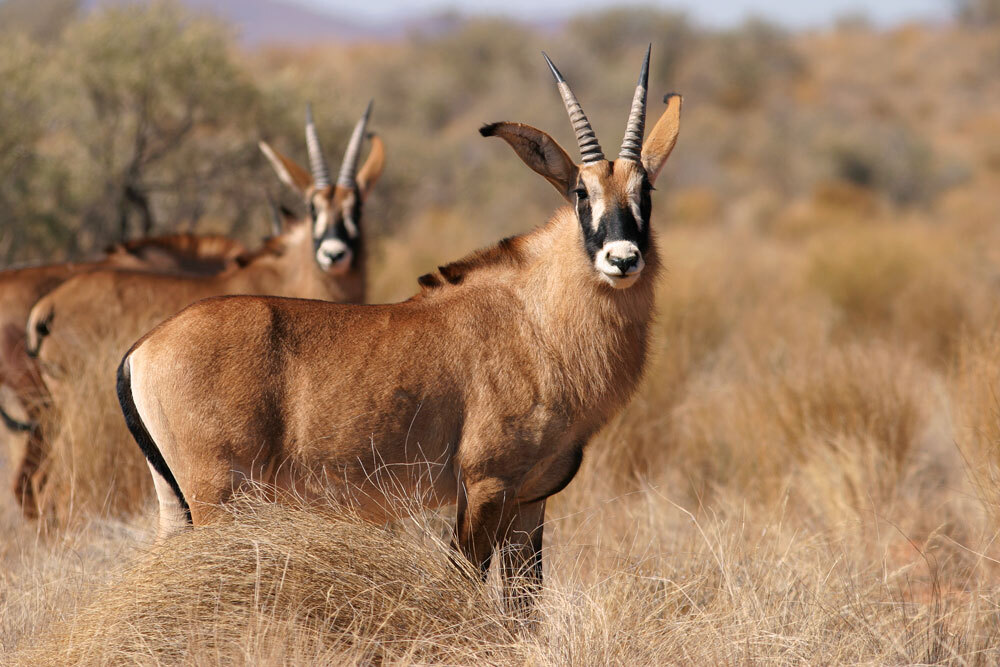The roan antelope (Hippotragus equinus) is named for its roan‑coloured (grey‑brown) coat and stands among Africa’s largest plains game. Both sexes carry backwards-curving horns, though bulls’ horns are longer and heavier. A distinctive black‑and‑white “clown mask,” long tufted ears, and a horse‑like build set this species apart. Its imposing stature and rarity make the roan a bucket‑list trophy for many hunters.

Roan hunting takes place in open woodland and tall grass plains near waterholes. Outfitters often walk and stalk along game paths in the early morning or late afternoon, glassing for the telltale black and white face of a mature bull. Roan are wary and will quickly move off if disturbed, so hunters may spend hours tracking a herd and then running to intercept it for a clean shot. In South Africa, the roan is classified as a TOPS animal, and hunts are limited with special permits; some countries completely prohibit roan hunting, so opportunities are scarce.
Approximately 60,000 roan survive across Africa, but the species has vanished from parts of its former range and now mainly occurs in national parks and large reserves. Poaching, habitat loss and competition with livestock have driven regional declines, and roan is already regionally extinct in two countries. Five subspecies are recognised (southern, western, East African, Angolan and Sudan roan), and trophy hunting is carefully regulated with quotas or bans depending on the country. Sustainable hunting fees provide revenue for anti‑poaching patrols and encourage landowners to conserve the extensive grasslands required.
Roan are harem breeders; a dominant bull defends a group of females and calves by dropping to his knees and battling rivals with sweeping horn strokes. Calves remain hidden in tall grasses for the first two weeks of life while their mothers graze and return to nurse. Roan are primarily grazers but will occasionally browse; they require access to water and may travel long distances during the dry season. Because they can be aggressive when wounded, close tracking after the shot should be undertaken with caution.
Roan can be found in the following location:
Roan has the following variations:
- Western Roan
- East African Roan
- Southern Roan
- Sudan Roan
Start Your Adventure



